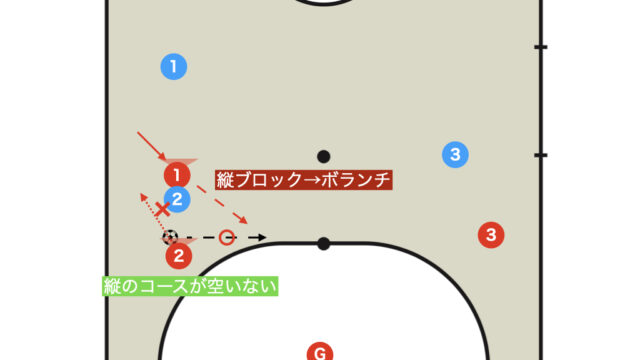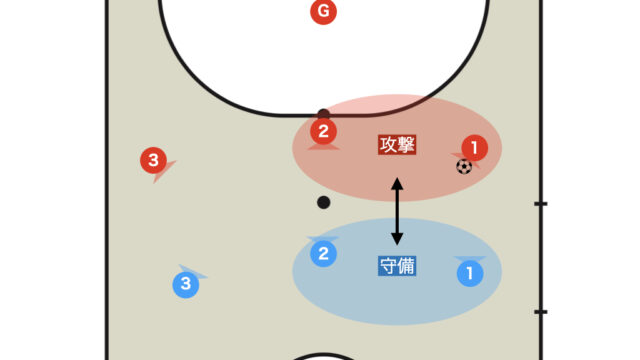Diagonal (daiagonal) means “diagonal” or “slanted”, and in futsal, it is considered an important action when paired with parallel.
However, haven’t many people wondered the following?
“Jagonau? Diagonal? Daiagonal? In the end, which one is the correct term?!”
In conclusion, all are correct.
They all share the same spelling, “diagonal”, but each language—English, Spanish, and Portuguese—has its own way of pronouncing it.
- English: Daiagonal
- Portuguese: Jiagonar, Jagonau, Jagunau
- Spanish: Diagonal
Across Japan, the majority tend to call it “Jagonau”, while among coaches, many refer to it as “Diagonal” (likely due to their connections with Spanish coaches).
In this article, we provide an in-depth explanation of the tactical advantages, key points, and tips for both the passer and the receiver when executing a diagonal play.
Tactical Advantages
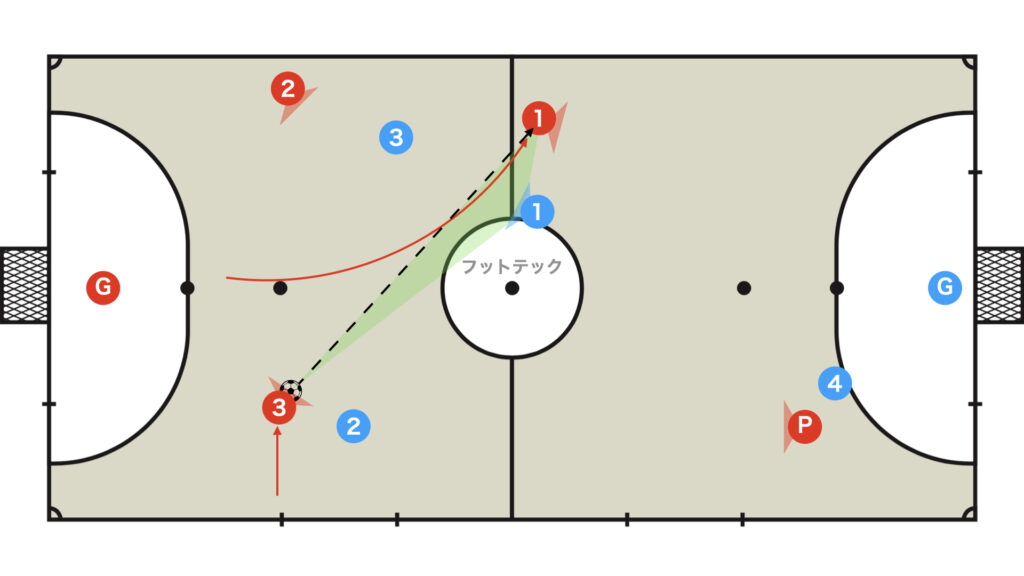
The primary tactical advantage of the diagonal is that the opposing defender cannot view both the ball and his own marker within the same field of vision.
In contrast, with parallel play, the opposing defender can simultaneously monitor both the ball and the marker, making it less likely to create a positional advantage.
Key Points of the Diagonal
Awareness of Space and Preferred Foot

It is important for the player making the diagonal run to secure and recognize the space into which they are moving.
While in parallel play the receiver’s preferred foot is important, in diagonal play the passer’s preferred foot becomes extremely significant.
This is because executing a diagonal pass while carrying the ball into the center is difficult to perform with the non-dominant foot.
Attracting the Opponent
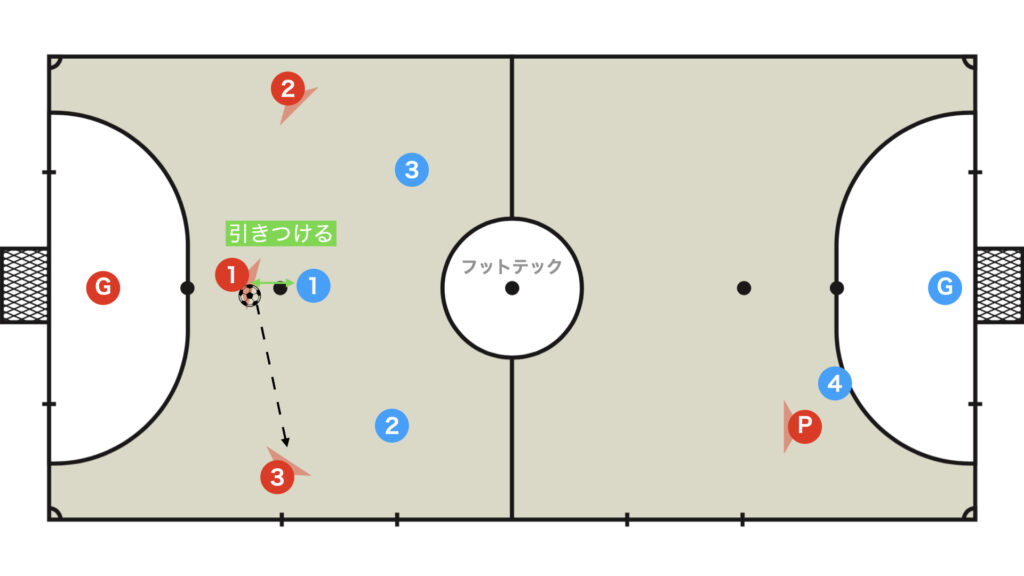
Even if you do not intentionally attract the opponent, you can break away from the marking by adjusting your movement after passing the ball; however, deliberately drawing the opposing defender makes it easier to break the mark.
The Passer Carries the Ball Inside
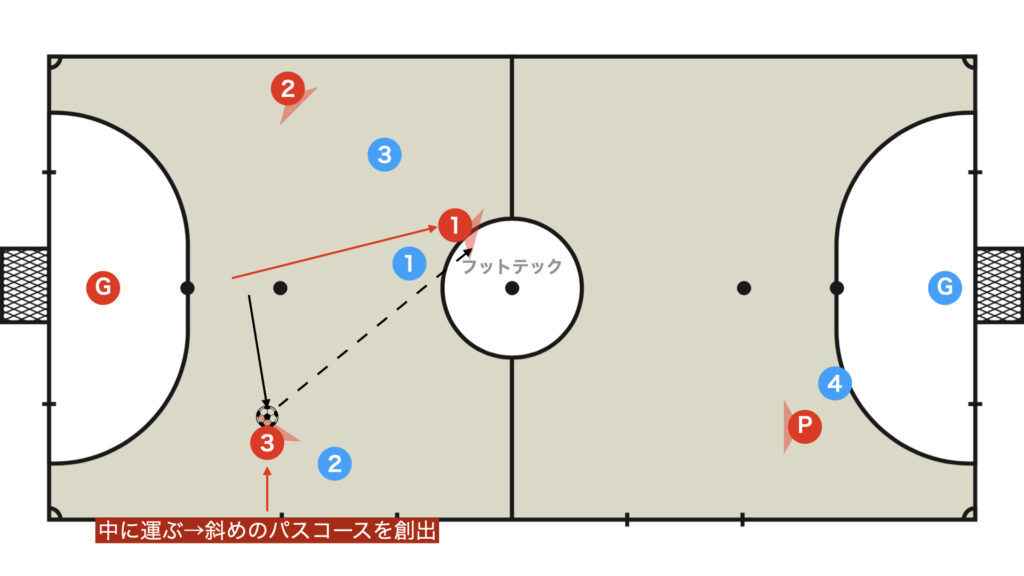
By carrying the ball into the center, the passer can avoid the press from the opposing defender (blue No.2) while creating a diagonal passing lane.
If the passer is not under pressure, there is no need to carry the ball inside.
Types of Diagonals (Front and Back)
The way in which a receiver accepts the ball generally falls into two patterns: front and back.
Receiving from the Back (Backdoor)
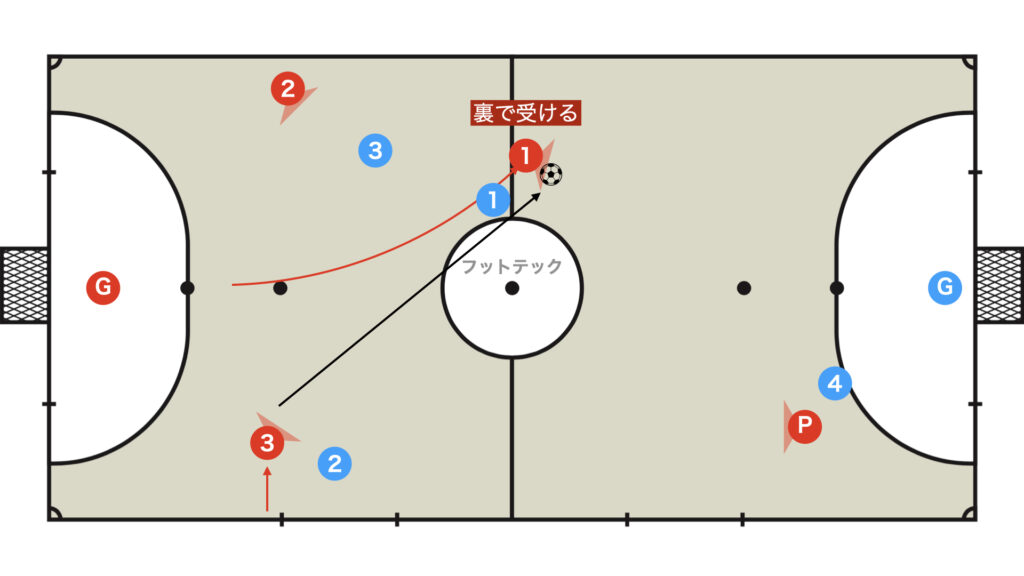
This is the diagonal that should be prioritized.
Although the movement is executed as a diagonal, it is essentially the same as a backdoor; hence, many people regard this phenomenon as a “backdoor”.
Receiving from the Front

Generally, when people refer to “diagonal”, they are often referring to this type.
The key is to target the opponent’s back with a backdoor or parallel movement, and then quickly break away with a kevra (direction change).
Although a numerical advantage is not created, the vast space available until the opposing defender retreats allows for attacking patterns such as initiating a 1-on-1 dribble, or the player receiving the ball via the diagonal immediately becoming the pivo while the passer makes a run to receive a drop pass.
Types of Diagonals (by Length)
Diagonals can be roughly classified by the length of the pass into long and short types.
Long Diagonal

A long diagonal that spans more than two lines.
It is also possible for a player who makes a diagonal run to immediately become the pivo.
It is used as a means for formation changes from 3-1 to 2-2, or for the interchange between the pivo and fixo in a 3-1 formation.
Short Diagonal
A diagonal that extends over a single line.
It is also used as a means for changing formations from 3-1 (or 3-0-1) to 2-1-1.
Mini Diagonal
A mini diagonal refers to the movement where, due to the duo relationship of fixo and ala, the ala positioned in the sideline takes up a higher position to distance himself from the opponent.
This allows the ala to receive the pass in an optimal position, away from the opposing defender.
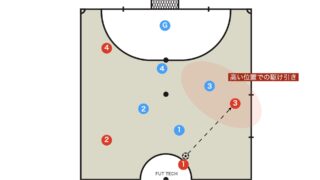
Types of Receiver Movements
Direct (Straightforward)
A diagonal executed in a straight line to outpace the opposing defender.
Change of Pace
A diagonal where the player initially appears uninterested in receiving the pass, only to suddenly accelerate.
kevra (Direction Change)
A diagonal in which you deceive the opponent into thinking you’ll choose another option, then change direction and break through.
In futsal, this bending maneuver is referred to as kevra.
Parallel → Diagonal
A fake executed in parallel is used to change direction and then break with a diagonal.
The interplay between parallel and diagonal is key to confusing the opposing defender.
Parallel Support → Diagonal
After making the opponent think you are executing parallel support with moves such as a one-two, block, or curtain, you then break with a diagonal.
This approach has the advantage of more easily creating space behind the opponent.
Conclusion
Diagonal is an action that contrasts with parallel, yet it occurs less frequently during a game.
However, since it is just as important as parallel, integrating it effectively into the team’s play is crucial.
Finally, here is a video in which renowned coaches discuss diagonals for two hours.
For those interested, please watch it.
Thank you very much for reading this article to the end.
If you found this article useful, please consider sharing it using the social media share buttons above.
We regularly share valuable insights on futsal tactics on Twitter, so if you haven’t followed us yet, we’d appreciate your support!
We are committed to raising the level of futsal in Japan by sharing high-quality information through discussions with individuals who have coaching experience in the F.League and overseas.
If you have any questions or notice any mistakes, feel free to leave a comment below.
We update our articles regularly, so if you’d like to keep reading, please bookmark our site or search for “FutTech”!

